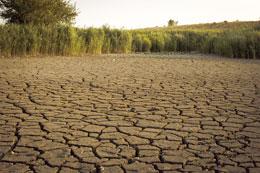Heatwaves scorch Asia as region braces for El Nino

The heatwave that began in April in Asia, with record temperatures in countries such as China, India, Bangladesh, Thailand and Vietnam, continues to affect several parts of the continent, which braces for the possible effects of El Nino.
The meteorological service at Beijing expects high temperatures this week and has urged all residents to avoid outdoor activities especially around midday when the sun is hottest.
On June 22, the mercury touched 41.1 degrees Celsius in Beijing, the second highest ever recorded for the city and the highest for June, according to official data.
The provinces of Hebei, Shandong and the Inner Mongolia Autonomous Region also recorded record high temperatures in recent days.
In recent weeks, India witnessed several heatwaves with temperatures of up to 45 degrees in the north, where at least 68 people died and more than 170 were admitted to hospitals with symptoms of heat stroke.
Meanwhile, neighboring Pakistan recorded temperatures of 49 degrees last week. The country is one of the most vulnerable to climate change, especially because of the large number of glaciers that it houses and that provide fresh water to millions of people.
The north of the country is now experiencing the first rainfall as monsoon approaches, which has left at least 16 dead and 32 injured, official sources said on Tuesday.
Bangladesh also faced a severe heatwave in early June, with temperatures close to 40 degrees Celsius, which led the authorities to order the closure of primary and secondary schools and caused numerous power cuts in a nation already facing an energy crisis.
In Vietnam, where extreme heat since April has caused record highs (up to 44.2 degrees in May), there have been multiple power cuts due to a sharp decline in hydroelectric production following a prolonged drought and higher than usual consumption.
Although the heatwave in Southeast Asia appears to be abating, the region, very vulnerable to the climate crisis, is preparing for more heat and possible droughts caused by the El Nino phenomenon.
Earlier this month, the Meteorological Service of Singapore predicted that there was a 70-80 percent chance that certain El Nino-generated situations would occur in the second half of the year, with possible water shortages and wildfires, among other things.
El Nino represents a warming of the surface of the central and eastern tropical Pacific Ocean that causes increases in global temperatures, and that in Southeast Asia could threaten the agricultural production of essential products such as palm oil and rice, among others.









